✕

Column: industry Tag: Tips,Cocktail,Different Levels Published: 2024-07-16 11:39 Source: www.mashed.com Author: MARIA SCINTO
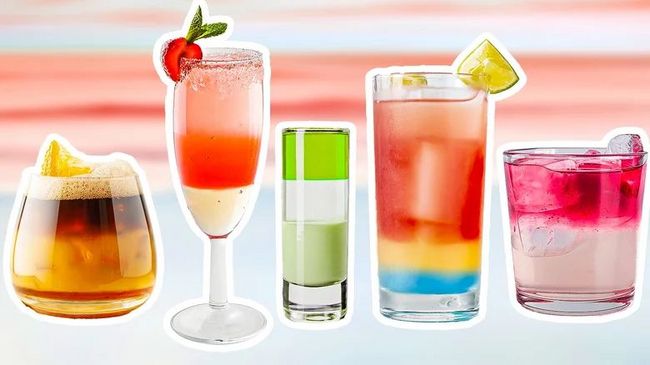
Static Media / Shutterstock / Getty
While some of us dream of going to school in our underwear, others may envision themselves behind a swanky bar tasked with creating a complicated pousse-café. If the latter is more of a waking aspiration than a slumbering nightmare, though, you've come to the right place to learn how. Since stripy cocktails have had their moment in the spotlight over recent years, Mashed solicited some professional input from Tiffanie Barriere, who is also known as "The Drinking Coach."
Barriere works as both a cocktail educator and consultant and in the course of her professional duties, she's come across a multi-tiered drink or two. Luckily for us, she was happy to share plenty of advice on how to make sure they come out looking pretty and tasting good. With these tips in mind, your next attempt at a layered cocktail, whether it be a B-52 shot, a properly-poured black and tan, or our own Game of Thrones-inspired Heart of the Dragon, should be successful.
A bar spoon isn't the only tool for layering
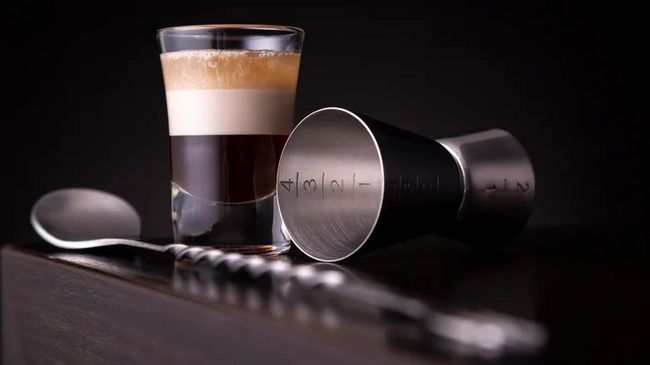
Impact Photography/Shutterstock
If you're planning to make a layered cocktail, in most cases you'll need some type of implement to help with a precision pour. Many recipes call for using a long-handled bar spoon, and Tiffanie Barriere says, "A bar spoon is indeed a fantastic tool for pouring layered cocktails." The long handle and the small bowl of the spoon help you control how fast the liquid pours and what direction it goes in. As Barriere explains, "This method minimizes the impact on the layer below, which is crucial for maintaining separation."
If you really want to pour like a pro, though, she says a bar spoon might not be the best tool to use. There are cocktail pouring and layering tools which she describes as having wider, flatter surfaces than bar spoons. This type of surface slows down the flow of the liquid and makes for a more even pour, which results in better definition between the layers. Such a tool can even be used in layered beer cocktails such as the Guinness Black Velvet where you wouldn't necessarily use a bar spoon. In Barriere's opinion, "The ideal choice depends on the bartender's preference and the specific recipe being executed."
What order do the liquids go into the glass?
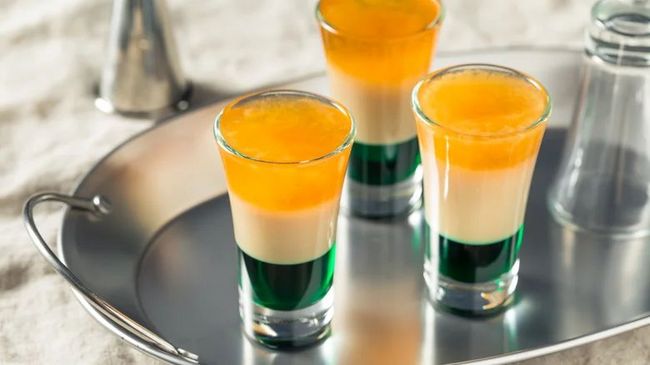
Bhofack2/Getty Images
If you are following a recipe for a well-known layered cocktail like the tequila sunrise, the directions should spell out step by step the correct order in which the ingredients should be poured. If you want to come up with your own layered cocktail recipes, however, Tiffanie Barriere says, "The key factor is the density of the liquids."
The densest liquids, usually syrups or liqueurs, are likely to sink to the bottom anyway, so it makes sense to pour them in first. There are some exceptions, however, as with the aforementioned tequila sunrise where you pour the liqueur in last so it can trickle down through the orange juice and tequila to create a hazy sunrise effect. Generally, juices or fortified wines go next, being of a medium density. The lightest liquids — typically spirits and soda — are the last to be added to the drink. Again, this isn't always the case, since in the Colorado Bulldog, the cola is topped off with a pour of heavier cream. Still, if you follow this general rule of adding the heaviest liquids first, followed by the lighter ones, Barriere says, "The visual and flavor experience is enhanced by this careful arrangement, ensuring each layer stays distinct."
Is layering cocktails done just for looks?

TSViPhoto/Shutterstock
You might think that the only reason to make a layered cocktail is to have a drink that looks pretty, but Tiffanie Barriere assures us this isn't the case. "Layering cocktails isn't just about aesthetics," she tells us. "It also offers a unique culinary experience." Drinking a layered cocktail can be, in her words, "a dynamic tasting journey" as each sip provides a slightly different experience. (Well, as long as you're consuming it correctly, that is — perhaps this is where that drinking coaching comes in.) According to Barriere, "The drinker experiences distinct taste profiles that can evolve over time or mix subtly as the layers start to blend."
With that in mind, Barriere suggests several different categories of drinks that taste even better when layered. With dessert cocktails, she feels that "Layering can enhance the rich, decadent flavors." With layered shooters, her take is that these are "quick to drink and offer a burst of layered flavors." Of course, a classic layered drink such as the pousse-café should always be prepared as per the instructions since, as Barriere notes, "The visual and taste components are equally important." While the term pousse-café is now synonymous with any multi-layered drink, the original was a French cocktail created in the 19th century. There's no one accepted version of the recipe, but modern ones may consist of such ingredients as grenadine, coffee liqueur, crème de menthe, orange liqueur, bourbon, and white rum.
Should layered cocktails have a solid component?
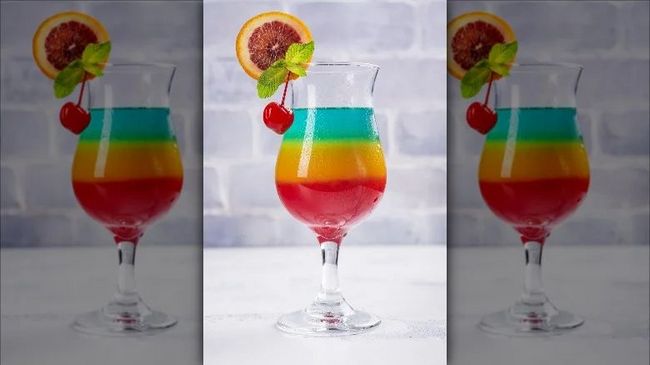
Happy_lark/Getty Images
The one thing that you won't see in most layered cocktails is any non-liquid component, unless, of course, it's a boozy boba drink with pearls on the bottom. Your more standard kind of layered cocktail, however, is strictly sans solids, and Tiffanie Barriere tells us there's a good reason for this. For one thing, these cocktails usually don't contain any ice cubes. She explains, "Ice can cause the layers to blend prematurely, especially as it melts."
As for any kind of solid garnishes on top of the drinks, Barriere feels that they are best kept to the bare minimum (or omitted altogether) since this "keep[s] the focus on the beautiful layers." Of course, that's all subject to change if you're doing it for the 'gram or the 'Tok or whatever other social media site just popped up overnight. In that instance, she says, "A carefully placed garnish can enhance the visual appeal and ... create a visual for social media or certain photoshoots." If you must use a garnish, whether it be to make the cocktail more photogenic or enhance the flavor, Barriere feels that herbs are your best bet for something that won't break up the layers. If you use a light hand, though, it's possible that a dusting of shaved chocolate won't compromise the integrity of your B-52, nor will an orange slice on the rim of the glass disrupt your rainbow cocktail to any extent.
Can a layered cocktail be served with a straw?
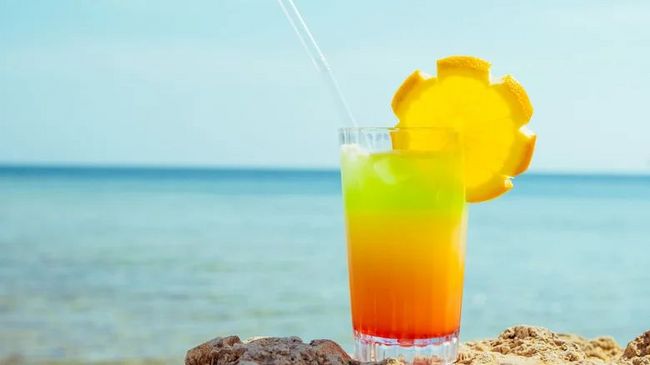
Maria Surtu/Shutterstock
Tiffanie Barriere says it's best to drink layered cocktails without a straw because she feels that this is the way you'll truly be able to appreciate the flavor and appearance of the different levels. "Drinking without a straw," she says, "allows for a direct taste of each layer, which can be part of the enjoyment." She does, however, acknowledge that some people will want or even need to drink through straws.
It's also worth noting that mixologists are divided on the straw issue. Some actually suggest drinking a pousse-café through a straw. According to this perspective, drawing the beverage from the bottom up will allow people to taste each layer in turn. It has also been argued that straws are best used when drinking something with a float while if the beverage is foam-topped, it might be best to start your sipping at the top.
Previous:How To Tell If A Hard Cider Is Sweet Or Dry (Even If The Label Doesn't Say)
Next:The First Known Aioli Sauce Can Be Traced Back To Roman Times
Hot key words
Hot Products
Popular Vendors